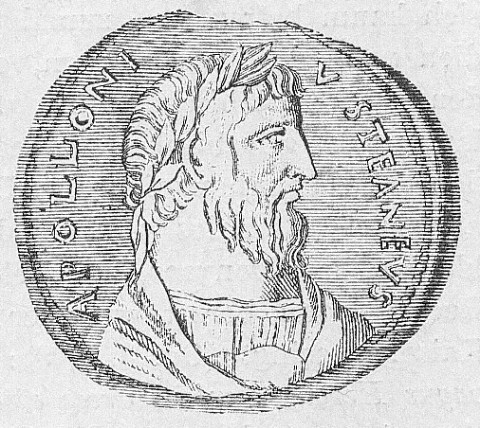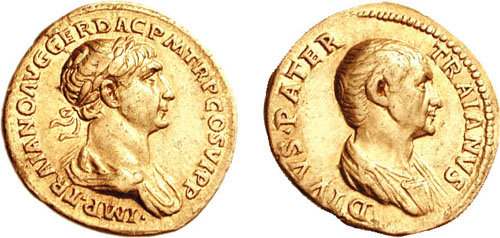|
Kemerhisar
Kemerhisar is a town (''belde'') in the Bor District, Niğde, Bor District, Niğde Province, Turkey. Its population is 5,463 (2022). Geography The distance from Kemerhisar to Bor, Niğde, Bor is and to Niğde is . It is only west of Bahçeli, Niğde, Bahçeli, another town of Niğde. History The earliest name of Kemerhisar was ''Tuwanuwa''. It was an important Hittites, Hittite city on the way to Cilician Gates in Taurus Mountains, Toros Mountains. During the Hellenistic age, the name was Tyana. It was briefly the capital of Cappadocia#History, Cappadocia, the vassal of Roman Empire. Apollonius of Tyana, a contemporary of Christ, was born in Tyana. The town was an important settlement during Roman Empire domination and the aqueduct, which is the symbol of the town, had been constructed by the emperors Trajan and Hadrian. After the town was incorporated into the Seljuk Empire in the 11th century, the Turkish people, Turks called the city ''Kilisehisar'' (Churchfort). The n ... [...More Info...] [...Related Items...] OR: [Wikipedia] [Google] [Baidu] |
Niğde
Niğde (; ; Hittite: Nahita, Naxita) is a city and is located in the Central Anatolia region of Turkey. It is the seat of Niğde Province and Niğde District.İl Belediyesi Turkey Civil Administration Departments Inventory. Retrieved 1 March 2023. Its population is 170,511 (2022). It lies at an elevation of . The city is small with plenty of green space and gardens around the houses. Its people generally tend to be religious and conservative. Medieval monuments are scattered about the centre of the town, especially around the market place. The nearest airport is Nevşehir Kapadokya Airport (NAV) which is 90.6 km (50.6 miles) away. History [...More Info...] [...Related Items...] OR: [Wikipedia] [Google] [Baidu] |
Bor, Niğde
Bor is a town in Niğde Province in the Central Anatolia region of Turkey, to the southeast of the city of Niğde (very frequent busses run between the two), on a high plain (altitude ). It is the seat of Bor District.İlçe Belediyesi Turkey Civil Administration Departments Inventory. Retrieved 1 March 2023. Its population is 41,999 (2022). The area is situated just north of the , not far from the (Gülek Boğazı), the mountain pass leading to Cilicia and Syria, and has long been a place of commercial and mili ... [...More Info...] [...Related Items...] OR: [Wikipedia] [Google] [Baidu] |
Tyana
Tyana, earlier known as Tuwana during the Iron Age, and Tūwanuwa during the Bronze Age, was an ancient city in the Anatolian region of Cappadocia, in modern Kemerhisar, Niğde Province, Central Anatolia, Turkey. It was the capital of a Luwian-speaking Neo-Hittite kingdom in the 1st millennium BC. Name The name of the city was () during the Hittite Empire, and () in the Luwian language during the Syro-Hittite period. From the Luwian name were derived: * the Neo-Assyrian Akkadian name of the city, (), * and the Ancient Greek name of the city, (; ). Geography Location The location of the Hittite Tūwanuwa/Neo-Hittite Tuwana/Classical Tyana corresponds to the modern-day town of Kemerhisar in Niğde Province, Turkey. Surroundings The region around Tyana, which corresponded to roughly the same area as the former Iron Age kingdom of Tuwana, was known in Classical Antiquity as Tyanitis. History According to later Hittite sources, Tūwanuwa was an important cult centre, and i ... [...More Info...] [...Related Items...] OR: [Wikipedia] [Google] [Baidu] |
Bahçeli, Niğde
Bahçeli is a town (''belde'') in the Bor District, Niğde Province, Turkey. Its population is 2,179 (2022). Geography Bahçeli is very close to Kemerhisar, another town in Niğde Province. Distance to Kemerhisar is to Bor is and to Niğde is . History According to radiocarbon dating (14C) in Köşkhöyük tumulus within Bahçeli earliest settlement in Bahçeli may be as old as 5000 BC. The nearby town Kemerhisar was a major settlement named Tyana in ancient ages and Bahçeli was a part of Tyana. The most important relic from the Roman Empire domination is a big Roman bath. After the Roman period, the settlement lost its former glory. It was a village during the Medieval ages In the history of Europe, the Middle Ages or medieval period lasted approximately from the 5th to the late 15th centuries, similarly to the post-classical period of global history. It began with the fall of the Western Roman Empire and .... After 1954, it was declared township. Econo ... [...More Info...] [...Related Items...] OR: [Wikipedia] [Google] [Baidu] |
Apollonius Of Tyana
Apollonius of Tyana (; ; ) was a Greek philosopher and religious leader from the town of Tyana, Cappadocia in Roman Anatolia, who spent his life travelling and teaching in the Middle East, North Africa and India. He is a central figure in Neopythagoreanism and was one of the most famous " miracle workers" of his day. His exceptional personality and his mystical way of life, which was regarded as exemplary, impressed his contemporaries and had a lasting cultural influence. Numerous legends surrounding him and accounts of his life are contained in the extensive ''Life of Apollonius''. Many of the ancient legends of Apollonius consist of numerous reports about miracles that he was said to have performed as a wandering sage with his lifelong companion Damis. He was tried for allegedly having used magic as a means of conspiring against the emperor; after his conviction and subsequent death-penalty, his followers believed he underwent heavenly ascension. Most modern scho ... [...More Info...] [...Related Items...] OR: [Wikipedia] [Google] [Baidu] |
Bor District, Niğde
Bor District is a district of the Niğde Province of Turkey. Its seat is the town of Bor.İlçe Belediyesi Turkey Civil Administration Departments Inventory. Retrieved 1 March 2023. Its area is 1,522 km2, and its population is 60,948 (2022). Composition There are four in Bor District: * Bahçeli * * Çukurkuyu * ...[...More Info...] [...Related Items...] OR: [Wikipedia] [Google] [Baidu] |
Niğde Province
Niğde Province () is a Provinces of Turkey, province in the southern part of Central Anatolia, Turkey. Its area is 7,234 km2, and its population is 365,419 (2022) of which 170,511 live in the city of Niğde. The population was 348,081 in 2000 and 305,861 in 1990. Neighbouring provinces are Kayseri Province, Kayseri, Adana Province, Adana, Mersin Province, Mersin, Konya Province, Konya, Aksaray Province, Aksaray and Nevşehir Province, Nevşehir. The province is surrounded on three sides by mountain ranges: the Taurus Mountains, Mount Hasan, and the Melendiz Mountains. Districts Niğde province is divided into 6 Districts of Turkey, districts (capital district in bold): * Altunhisar District, Altunhisar * Bor District, Niğde, Bor * Çamardı District, Çamardı * Çiftlik District, Çiftlik * Niğde District, Niğde * Ulukışla District, Ulukışla Some of the towns within these districts are Bademdere, Bahçeli, Niğde, Bahçeli, Çiftehan, Darboğaz, Fertek and Kemerhis ... [...More Info...] [...Related Items...] OR: [Wikipedia] [Google] [Baidu] |
Turkish People
Turks (), or Turkish people, are the largest Turkic peoples, Turkic ethnic group, comprising the majority of the population of Turkey and Northern Cyprus. They generally speak the various Turkish dialects. In addition, centuries-old Turkish communities in the former Ottoman Empire, ethnic Turkish communities still exist across other former territories of the Ottoman Empire. Article 66 of the Constitution of Turkey defines a ''Turk'' as anyone who is a citizen of the Turkish state. While the legal use of the term ''Turkish'' as it pertains to a citizen of Turkey is different from the term's ethnic definition, the majority of the Turkish population (an estimated 70 to 75 percent) are of Turkish ethnicity. The vast majority of Turks are Sunni Islam, Sunni Muslims, with a notable minority practicing Alevism. The ethnic Turks can therefore be distinguished by a number of cultural and regional variants, but do not function as separate ethnic groups. In particular, the culture of the ... [...More Info...] [...Related Items...] OR: [Wikipedia] [Google] [Baidu] |
Seljuk Empire
The Seljuk Empire, or the Great Seljuk Empire, was a High Middle Ages, high medieval, culturally Turco-Persian tradition, Turco-Persian, Sunni Islam, Sunni Muslim empire, established and ruled by the Qiniq (tribe), Qïnïq branch of Oghuz Turks. The empire spanned a total area of from Anatolia and the Levant in the west to the Hindu Kush in the east, and from Central Asia in the north to the Persian Gulf in the south, and it spanned the time period 1037–1308, though Seljuk rule beyond the Anatolian peninsula ended in 1194. The Seljuk Empire was founded in 1037 by Tughril (990–1063) and his brother Chaghri Beg, Chaghri (989–1060), both of whom co-ruled over its territories; there are indications that the Seljuk leadership otherwise functioned as a triumvirate and thus included Seljuk dynasty, Musa Yabghu, the uncle of the aforementioned two. During the formative phase of the empire, the Seljuks first advanced from their original homelands near the Aral Sea into Greater Kho ... [...More Info...] [...Related Items...] OR: [Wikipedia] [Google] [Baidu] |
Hadrian
Hadrian ( ; ; 24 January 76 – 10 July 138) was Roman emperor from 117 to 138. Hadrian was born in Italica, close to modern Seville in Spain, an Italic peoples, Italic settlement in Hispania Baetica; his branch of the Aelia gens, Aelia ''gens'', the ''Aeli Hadriani'', came from the town of Atri, Abruzzo, Hadria in eastern Italy. He was a member of the Nerva–Antonine dynasty. Early in his political career, Hadrian married Vibia Sabina, grandniece of the ruling emperor, Trajan, and his second cousin once removed. The marriage and Hadrian's later succession as emperor were probably promoted by Trajan's wife Pompeia Plotina. Soon after his own succession, Hadrian had four leading senators unlawfully put to death, probably because they seemed to threaten the security of his reign; this earned him the senate's lifelong enmity. He earned further disapproval by abandoning Trajan's expansionist policies and territorial gains in Mesopotamia (Roman province), Mesopotamia, Assyria ( ... [...More Info...] [...Related Items...] OR: [Wikipedia] [Google] [Baidu] |
Trajan
Trajan ( ; born Marcus Ulpius Traianus, 18 September 53) was a Roman emperor from AD 98 to 117, remembered as the second of the Five Good Emperors of the Nerva–Antonine dynasty. He was a philanthropic ruler and a successful soldier-emperor who presided over one of the greatest military expansions in Roman history, during which, by the time of his death, the Roman Empire reached its maximum territorial extent. He was given the title of ('the best') by the Roman Senate. Trajan was born in the of Italica in the present-day Andalusian province of province of Seville, Seville in southern Spain, an Italic peoples, Italic settlement in Hispania Baetica; his came from the town of Todi, Tuder in the Regio VI Umbria, Umbria region of central Italy. His namesake father, Marcus Ulpius Traianus (father of Trajan), Marcus Ulpius Traianus, was a general and distinguished senator. Trajan rose to prominence during the reign of Domitian; in AD 89, serving as a in , he supported t ... [...More Info...] [...Related Items...] OR: [Wikipedia] [Google] [Baidu] |







